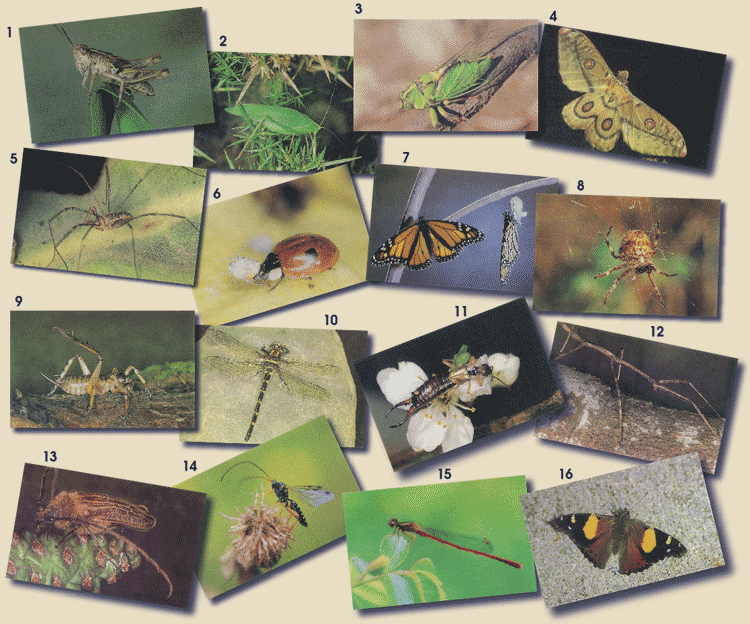| Approach: Team |
Level:
Year 4
and year 8 |
|
| Focus:
Classification
|
| Resources:
2 sets of 16
pictures, 2 instruction cards, answer sheets |
 |
5.3Mb |
|
|
| Questions/instructions:
This activity you
will be working in pairs so I want [A1 name] and [A2 name] to work together,
and [A3 name] and [A4 name] to work together. I am going to give to
each pair a set of 16 cards.

These cards
show some of the bugs that are found in New Zealand. As a pair I
want you to find the best way to sort these bugs into four groups.
Each group should have bugs in it that have some similar features.
You and your partner need to agree on how you are going to group
them.
You also need to decide on a name for each of your groups of bugs
that describes the group. Here is an example for you: if I was grouping
people, one group of people might be those with red hair and blue
eyes. I could call this group “Red Hair and Blue Eyes”.
You write the name of each group here on this answer sheet.
Show “pairs” answer sheet.
|
|
You also need
to describe three features that are special to the bugs in each
of your groups. There are spaces on the answer sheet for you to
write the special features.
When you are both happy with your groups and what is written on
your answer sheets, write down the numbers of the cards in each
group.
Here is an instruction card for each pair that tells you what to
do.
Show and read out loud the instruction card. |
|
You
can work with your partners now, but try not to let the other pair
see or hear what you are deciding.
Allow time and assist with recording as necessary. Ensure
pairs work separately.
When the two pairs have finished bring the four students
together.
Now I want you to work together as a group of four. Think again
about the best way to group the bugs, and the best way to name your
groups. Each member of the team needs to agree on the groups. I
will give you another answer sheet for writing down the group names
and special features. You also need to record the card numbers on
the answer sheet.
Give out the “team” answer sheet and allow time.
(Team answer sheet is indentical to pairs answer
sheet except for title of sheet) |
|
|
%
responses
2003 ('99) |
| y4
|
y8 |
Based
on team answer sheet:
|
Description
of group:
(group named appropriately with key distinctive features) |
|
|
group
1 |
41
(33) |
51
(50) |
group
2 |
33
(20) |
57
(47) |
group
3 |
28
(20) |
49
(43) |
group
4 |
31
(20) |
37
(20) |
Coherence
- group 1:
|
all
bugs included fit, no other bugs would fit |
20
(20) |
27
(27) |
all
included bugs fit, but at least one other would also fit |
52
(47) |
48
(40) |
Coherence
- group 2:
|
all
bugs included fit, no other bugs would fit |
13
(17) |
22
(37) |
all
included bugs fit, but at least one other would also fit |
42 (46) |
45
(30) |
Coherence
- group 3:
|
all
bugs included fit, no other bugs would fit |
13
(13) |
26
(40) |
all
included bugs fit, but at least one other would also fit |
41
(53) |
40
(33) |
Coherence
- group 4:
|
all
bugs included fit, no other bugs would fit |
8
(3) |
22
(23) |
all
included bugs fit, but at least one other would also fit |
47
(57) |
42
(63) |
| |
|
|
|
Total
Score:
|
18–24
|
3
(3) |
12
(13) |
15–17
|
19
(7) |
25
(17) |
12–14
|
24
(33) |
35
(40) |
9–11
|
32
(40) |
20
(23) |
0–8
|
22
(17) |
8
(7) |
Commentary
This task was quite a challenge for most teams, with 28 percent of year
8 teams and 54 percent of year 4 teams getting less than half marks. The
difference between years 4 and 8 was less marked at the top end. There
is very little evidence of change between 1999 and 2003. |